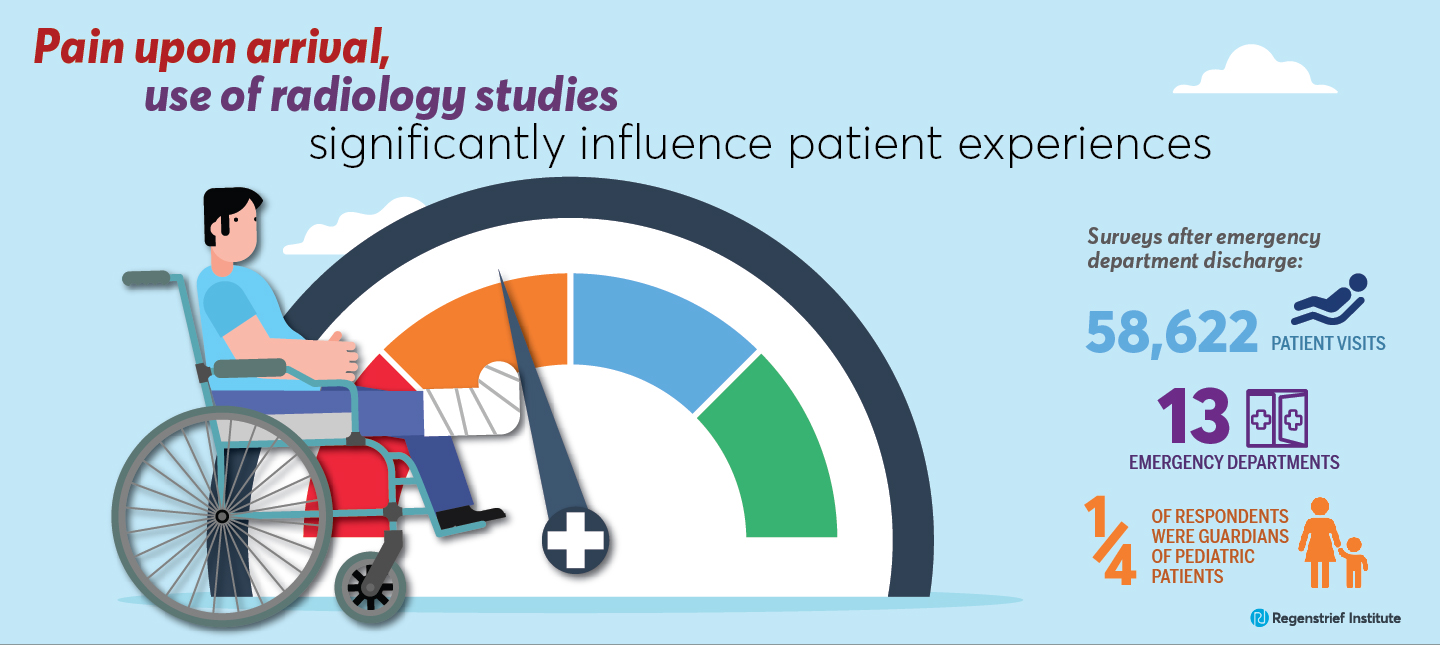Regenstrief Institute co-authors of CDC VISION Network study encourage getting bivalent booster
A nationwide U.S. study of more than 893,000 adults provides solid evidence confirming that mRNA booster immunizations extend protection against moderate and severe COVID for four to five months. These findings, published in The BMJ, provide a more complete understanding of the effectiveness and durability of third and fourth doses of the mRNA vaccines, informing policymakers and providing individuals with confirmation of the importance and value of boosters.
Vaccine effectiveness provided by boosters waned less against severe disease than against moderate disease in all age groups according to the new study which was conducted by the Centers for Disease Control and Prevention’s (CDC) VISION Network.
“While there have been recommendations for booster shots for a while, until now we haven’t had strong evidence of their effectiveness and how long that effectiveness lasts,” said study co-author Brian Dixon, PhD, of the Regenstrief Institute and Indiana University Richard M. Fairbanks School of Public Health. “In our new study, we looked at tens of thousands of patients in multiple states, seen over a year and a half. Our analysis provides compelling evidence, both of the effectiveness of boosting to increase immunity, and that this immunity begins to wane after four or five months, indicating additional booster doses are necessary.
“The recommendations to get boosted that were issued by the CDC months ago, were, in fact, the right recommendations,” said Dr. Dixon. “Booster doses are necessary to maintain a high level of immunity to severe COVID.”
The bivalent booster, available since early September 2022, targets both historic strains of the SARS-CoV-2 virus and the Omicron variants (BA.4 and BA.5) currently circulating in the U.S. and globally.
Building on their initial, preliminary analysis, published in CDC’s Morbidity and Mortality Weekly Report, in the new study, the VISION Network scientists analyzed data from patients seen at 261 hospitals, 272 emergency departments and 119 urgent care clinics in 10 states across the U.S. from January 17, 2021 to July 12, 2022. The data covered periods of Omicron dominance (including subvariants BA.4 and BA.5), as well as the previous periods of Delta and pre-Delta dominance. The new study is published in The BMJ.
The authors found that in the Omicron period mRNA vaccine protection against severe COVID-19 was initially high (89 percent) but waned after primary vaccination. Focusing on the durability of boosters against hospitalization, (i.e., severe disease), the study found that effectiveness increased markedly after a booster shot, waning again about four to five months after the booster. Protection increased again following a second booster. The protection and waning pattern with Moderna and Pfizer boosters were similar.
“If it has been four months or longer since your last COVID booster, or if you had the initial two shots and have never received a booster, you should strongly consider a bivalent booster, which targets ancestral strains of the COVID virus plus subvariants Omicron BA.4 and BA.5,” said study co-author Shaun Grannis, M.D., M.S., Regenstrief Institute Vice President for Data and Analytics. “The evidence that boosters can keep you healthy is compelling. Combining a COVID booster with an annual flu shot will help you make it through the respiratory disease season.” Dr. Grannis also is a professor of family medicine with IU School of Medicine.
The BMJ study authors estimate that booster shots to counteract waning could prevent 300 hospitalizations in the U.S. for severe COVID per week.
They note that the strengths of their new study include the “number and diversity of sites and inclusion of outcomes of varying severity as well as a sample size large enough to detect modest waning of vaccine protection.” Cases were compared with controls tested during the same week in the same geographic area, allowing the researchers to distinguish differences in vaccine effectiveness attributable to the waning of vaccine-induced immunity from those attributable to the ebb and flow of variants.
The CDC collaborated with seven U.S. healthcare systems plus the Regenstrief Institute, to create the VISION network to assess COVID-19 vaccine effectiveness. In addition to Regenstrief Institute, other members are Columbia University Irving Medical Center, HealthPartners, Intermountain Healthcare, Kaiser Permanente Northern California, Kaiser Permanente Northwest, University of Colorado and Paso Del Norte Health Information Exchange (PHIX). Regenstrief contributes data and expertise to the VISION Network.
Regenstrief Institute authors of this VISION Network study, “Waning of vaccine effectiveness against moderate and severe covid-19 among adults in the US from the VISION network: test negative, case-control study,” in addition to Drs. Dixon and Grannis, are William F. Fadel, PhD, Nimish Ramesh Valvi, DrPH, MBBS, and former Institute president and current affiliate scientist Peter Embi, M.D.
All authors of the study are Jill M. Ferdinands, PhD, Centers for Disease Control and Prevention COVID-19 Response Team; Suchitra Rao, MBBS, MSCS, University of Colorado; Brian E. Dixon, PhD, MPA, Regenstrief Institute and IU Richard M. Fairbanks School of Public Health; Patrick K. Mitchell, ScD, Westat; Malini B. DeSilva, M.D., MPH, HealthPartners Institute; Stephanie A. Irving, MHS, Kaiser Permanente Northwest; Ned Lewis, MPH, Kaiser Permanente Northern California; Karthik Natarajan, PhD, Columbia University Irving Medical Center and New York Presbyterian Hospital; Edward Stenehjem, M.D., M.S., Intermountain Healthcare; Shaun J. Grannis, M.D., M.S., Regenstrief Institute and Indiana University School of Medicine; Jungmi Han, B.S., Columbia University Irving Medical Center; Charlene McEvoy, M.D., MPH, HealthPartners Institute; Toan C. Ong, PhD, University of Colorado Anschutz Medical Campus; Allison L. Naleway, PhD, Kaiser Permanente Northwest; Sarah E. Reese, PhD, Westat; Peter J. Embi, M.D., M.S., formerly with Regenstrief Institute and Indiana University School of Medicine; Kristin Dascomb, M.D., PhD, Intermountain Healthcare; Nicola P. Klein, M.D., PhD, Kaiser Permanente Northern California; Eric P. Griggs, MPH, Centers for Disease Control and Prevention COVID-19 Response Team; I-Chia Liao, MPH, Baylor Scott & White Health; Duck-Hye Yang, PhD, Westat; William F. Fadel, PhD, Regenstrief Institute and IU Richard M. Fairbanks School of Public Health; Nancy Grisel, MPP, Intermountain Healthcare; Kristin Goddard, MPH, Kaiser Permanente Northern California; Palak Patel, MBBS, Centers for Disease Control and Prevention COVID-19 Response Team; Kempapura Murthy, MPH, MBBS, Baylor Scott & White Health; Rebecca Birch, MPH, Westat; Nimish R. Valvi, DrPH, Regenstrief Institute; Julie Arndorfer, MPH, Intermountain Healthcare; Ousseny Zerbo, PhD, Kaiser Permanente Northern California; Monica Dickerson, Centers for Disease Control and Prevention COVID-19 Response Team; Chandni Raiyani, MPH, Baylor Scott & White Health; Jeremiah Williams, MPH, Centers for Disease Control and Prevention COVID-19 Response Team; Catherine H. Bozio, PhD, Centers for Disease Control and Prevention COVID-19 Response Team; Lenee Blanton, MPH, Centers for Disease Control and Prevention COVID-19 Response Team; Ruth Link-Gelles, PhD, Centers for Disease Control and Prevention COVID-19 Response Team; Michelle A. Barron, M.D., University of Colorado Anschutz Medical Campus; Manjusha Gaglani, MBBS, FIDSA, FPIDS, FAAP, Baylor Scott & White Health; Mark G. Thompson, PhD, Centers for Disease Control and Prevention COVID-19 Response Team; and Bruce Fireman, Kaiser Permanente Northern California.
The study was funded by the CDC.
About Brian E. Dixon, PhD, MPA
In addition to his roles as interim director of the Regenstrief Institute’s Clem McDonald Center for Biomedical Informatics and director of public health informatics for Regenstrief Institute and Indiana University Richard M. Fairbanks School of Public Health, Brian E. Dixon, PhD, MPA, is a professor of epidemiology at the Fairbanks School of Public Health. He is also an affiliate scientist at the U.S. Department of Veterans Affairs Health Services Research and Development Center for Health Information and Communication, Richard L. Roudebush VA Medical Center.
About Shaun Grannis, M.D., M.S.
In addition to his role as the vice president for data and analytics at Regenstrief Institute, Shaun Grannis, M.D., M.S., is the Regenstrief Professor of Medical Informatics and professor of family medicine at Indiana University School of Medicine.
About Regenstrief Institute
Founded in 1969 in Indianapolis, the Regenstrief Institute is a local, national and global leader dedicated to a world where better information empowers people to end disease and realize true health. A key research partner to Indiana University, Regenstrief and its research scientists are responsible for a growing number of major healthcare innovations and studies. Examples range from the development of global health information technology standards that enable the use and interoperability of electronic health records to improving patient-physician communications, to creating models of care that inform practice and improve the lives of patients around the globe.
Sam Regenstrief, a nationally successful entrepreneur from Connersville, Indiana, founded the institute with the goal of making healthcare more efficient and accessible for everyone. His vision continues to guide the institute’s research mission.
About the IU Richard M. Fairbanks School of Public Health
Located on the IUPUI and Fort Wayne campuses, the IU Richard M. Fairbanks School of Public Health is committed to advancing the public’s health and well-being through education, innovation and leadership. The Fairbanks School of Public Health is known for its expertise in biostatistics, epidemiology, cancer research, community health, environmental public health, global health, health policy and health services administration.
About IU School of Medicine
IU School of Medicine is the largest medical school in the U.S. and is annually ranked among the top medical schools in the nation by U.S. News & World Report. The school offers high-quality medical education, access to leading medical research and rich campus life in nine Indiana cities, including rural and urban locations consistently recognized for livability.











